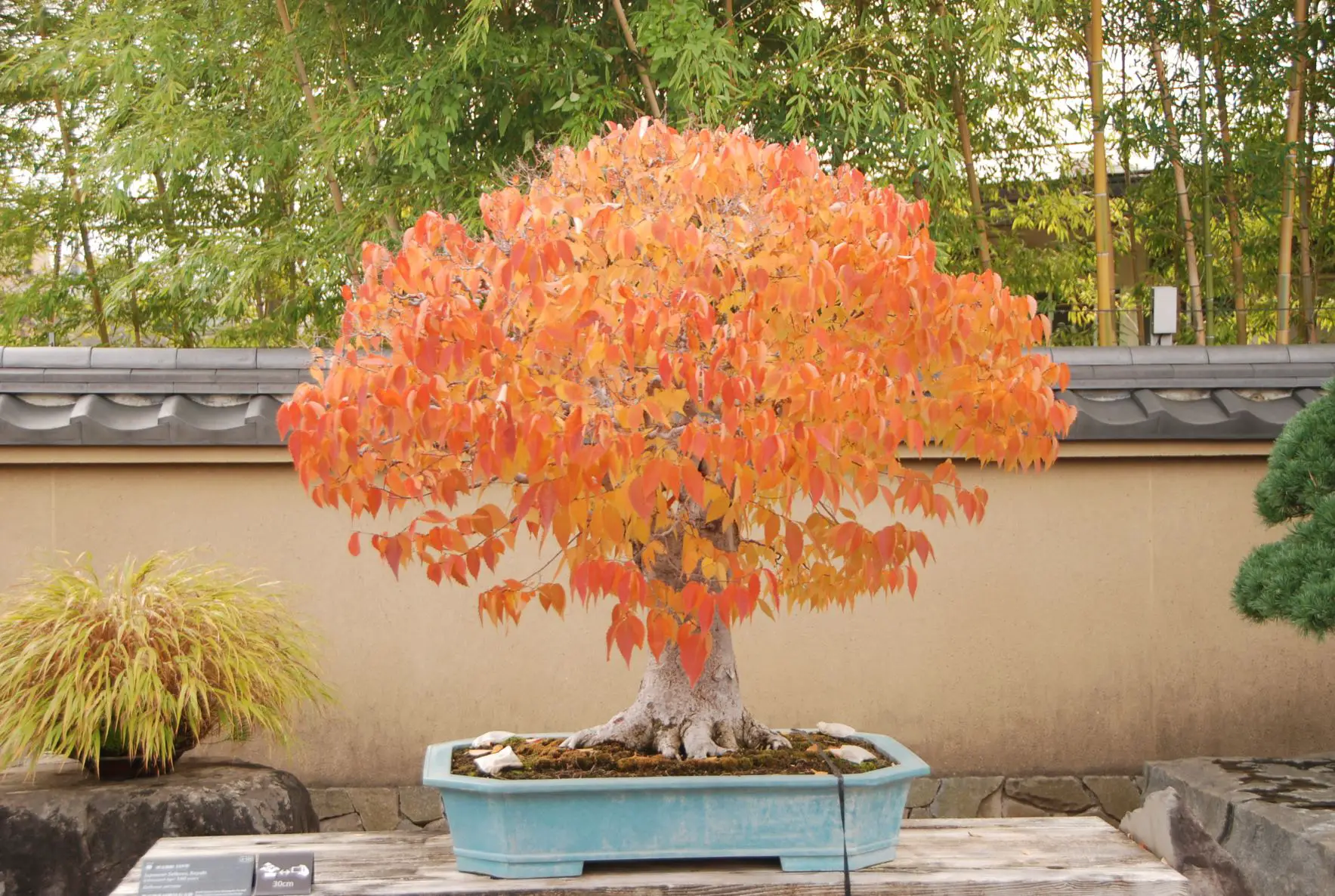Generally speaking, bonsai trees start to be damaged with temperatures below 0°F (-20°C). Minimum survival temperatures depend on acclimation state, age, and different organs and tissues within that tree.
How cold is too cold for bonsai trees?
What determines plants’ cold hardiness?
Most plants that are considered cold-hardy have the ability to avoid ice crystals from forming within or between cells.
Although genetics determines their ability to fight against cold, plants need to slowly increase their tolerance to cold temperatures. This acclimation is triggered by environmental conditions such as cold temperatures, shortening daytime, and mild drought.
In short, plants’ cold hardiness is a combined function of genetic capability and environmental conditions.
How do plants become cold hardy?
Winter acclimation actually begins in late summer. Once it begins, the lowering of temperatures and shorter day length during fall and early winter cause the plant to slowly develop hardiness.
If you are interested in the cold hardiness and the bonsai trees, the following post may be helpful.
Low temperature tolerance of bonsai trees
Lab experiments on low-temperature tolerance
Apart from studies on crops, there are not many scientific experiments on the low-temperature tolerance conducted for woody plants (=bonsai tree species) simply because crops are our food source and they are more susceptible to cold damage.
But there are still some experiments done by scientists that show what temperature is too cold for woody plants (bonsai trees).
Outline of experiments
This is how those experiments are conducted.
- Young, (dormant) twigs and needle leaves, if any, are collected from matured trees in mid-winter.
- They are then artificially hardened at sub-freezing temperatures for about 20 days to develop maximum frost hardiness.
- Scientists measured symptoms of frost injury at the cellular level.
- The lowest temperatures at which the cells have not suffered any injury (or almost no injury) are the lowest tolerable temperatures for that tree.
- The same experiments are repeated next year and the year after the next to obtain the accurate minimum tolerable temperatures.
A word of warning
Minimum survival temperatures for a certain tree are not uniform and can vary according to its acclimation state, age, and different organs and tissues within that tree.
- Trees may not be hardened enough in early winter.
- Younger trees are more vulnerable.
- Flower buds are generally the most vulnerable, followed by vegetative buds.
Also, under natural conditions, trees may be subject to more complex environmental conditions than in lab tests, such as prolonged low temperatures, repeated freezing and thawing, or warming by the sun followed by rapid cooling.
So, these lab results may not correspond to minimum survival temperatures for your bonsai trees in your backyard.
There is one more thing to consider: the cold hardiness of trees’ aboveground parts does not have an influence on root hardiness and aboveground organs are much hardier than roots. As bonsai trees’ roots are elevated above the ground in pots, they are more subjected to cold temperatures.
So, you should always take some precautions to protect your bonsai trees before it hits the lowest durable temperatures for your bonsai trees.
If you are interested in overwintering bonsai trees, please read the following post.
Frost hardiness of bonsai trees (lab tests)
Frost hardiness: coniferous trees
| Species | Buds | Leaf | Stem |
| Cedar (Himalayan cedar) |
-4°F | 1°F | 1°F |
| Cedar (Japanese cedar) |
-4°F | -4°F | -4°F |
| Fir (Sakhalin fir) |
-22°F | -94°F | -94°F |
| Juniper (Chinese juniper) |
-13°F | -13°F | -13°F |
| Larch (American larch) |
-94°F | -94°F | -94°F |
| Pine (Red pine) |
-22°F | -13°F | -40°F |
| Pine (Black pine) |
-13°F | -13°F | -13°F |
| Spruce (White spruce) |
-94°F | -40°F | -94°F |
| Spruce (Sakhalin spruce) |
-94°F | -40°F | -32°F |
| Spruce (Ezo spruce) |
-40°F | -94°F | -94°F |
| Yew (Japanese yew) |
-22°F | -22°F | -94°F |
(Source: refer to the references below)
Frost hardiness: deciduous trees
| Species | Buds | Stem |
| Beech (Japanese beech) |
-17°F | -22°F |
| Birch (Korean hornbeam) |
-13°F | -13°F |
| Elm (David elm) |
-94°F | -94°F |
| Gingko | -31°F | -40°F |
| Maple (Japanese maple) |
-22°F | -40°F |
| Maple (Norway maple) |
-40°F | -94°F |
| Maple (Sugar maple) |
-94°F | -94°F |
| Oak (Jolcham oak) |
5°F | 5°F |
| Wax tree | 10°F | 5°F |
| Zelkova | -22°F | -22°F |
(Source: refer to the references below)
Frost hardiness: flowering/fruit trees
| Species | Flower buds | Vegetative buds | Stem |
| Azalea (Japanese azalea) |
-13°F | -40°F | -58°F |
| Azalea (Kyushu azalea) |
-13°F | -22°F | -22°F |
| Camellia (Japanese camellia) |
9°F | 9°F | 5°F |
| Cherry blossom (Yedo cherry) |
-4°F | -13°F | -13°F |
| Cherry blossom (Sargent’s cherry) |
-13°F | -22°F | -94°F |
| Magnolia (Yulan magnolia) |
-58°F | -58°F | -40°F |
| Plum blossom | 10°F | -4°F | 5°F |
| Pyracantha | 5°F | 5°F | 5°F |
| Wisteria | -4°F | -4°F | -22°F |
(Source: refer to the references below)
—–
References
酒井 昭, 石川 雅也, 針葉樹の冬芽の過冷却と枝の耐凍性, 日本林学会誌, 1979, 61 巻, 1 号, p. 15-20
酒井 昭, ツツジ属の耐寒性, 園芸学会雑誌, 1983-1984, 52 巻, 3 号, p. 294-301
酒井 昭, 日本における常緑及び落葉広葉樹の耐凍度とそれらの分布との関係, 日本生態学会誌, 1975, 25 巻, 2 号, p. 101-111
酒井 昭, わが国に自生する常緑および落葉広葉樹の耐凍性, 日本林学会誌, 1972, 54 巻, 10 号, p. 333-339
酒井 昭, 花木及び緑化樹の耐凍性, 園芸学会雑誌, 1978-1979, 47 巻, 2 号, p. 248-260
北村 文雄, 堀内 孝雄, サクラ類の耐寒性に関する実験的研究, 造園雑誌, 1983, 47 巻, 5 号, p. 112-116





